Italian Wine: A Market Leader in America
For the past 6 years, the Vino 2017 initiative has been organized by the Italian Trade Agency (ICE) in collaboration with Vinitaly International and International Exhibition Management. This year’s event took place in both New York and Miami. The days were packed with networking opportunities and presentations citing the latest developments in Italy’s main area of export–agricultural products. Furthermore, it’s important to note that 4% of “Made in Italy” products are sold in the US market.
We stopped to chat with the President of ICE, Michele Scannavini, who gave us a clear picture of the situation. From our conversation, it is evident that Italy has accepted a challenge, and although some difficulties exist, the country is realizing success after success.
Wine. Success after Success.
“The United States is a complex market with many internal differences and many opportunities that have not yet been explored,” Scannavini began to explain. “However, Italy holds a solid piece of the market. Our prices are significantly lower than those of our closest competitor: France. We still have a limited presence in the middle of the United States. We need to work on that.”
He also told us that Italian wine in the US is a market-leader among imported wines, accounting for approximately 1.7 billion in sales. This is the most significant market share of the entire agri-food industry. It’s doing well, and this year it will increase by approximately 7%.
More Work to be Done
“Nevertheless, we feel that we can do more,” Scannavini proceeds. “Overall, it’s best to introduce wines of the highest quality. Therefore, we created a strong, important plan. In fact, I would say it is the most important plan that the Italian Government has ever created for wine in the United States.
Over the next three years, 20 million will be invested for both market participants (distributors, importers, and retailers) and for consumers by way of communication and promotion.”
Optimism and the Trump Administration
The Trump Administration has some protectionist policies, but even in this political environment, Scannavini remains optimistic: “It’s important to consider that Europe has traditionally been an essential commercial and political partner of the United States. I’m thinking positively. In the end, I believe they will make choices that benefit the commercial relationship between the United States and Europe. Given that this relationship represents a fundamental part of the American economy, I tend to think that they won’t choose measures that can, in some way, compromise commercial trading.”
Italy Charms Americans
Leaving the numbers aside, we wanted to speak with him about a topic that is, in our opinion, the cornerstone of his speech in front of the press: the allure of Italy worldwide and, in particular, for Americans.
He essentially stated that the positive notions linked to the Italian lifestyle must be deepened. He told us, “The strategies regarding wine coincide with those regarding the Made in Italy branding. That is, Made in Italy is strangely aspirational because it’s not only rich in information regarding products, which are often technological or functional, but also because it evokes a unique lifestyle.
It is a lifestyle made of culture, tradition, the joy of life, and the appreciation of beauty. The same applies for wine; it needs to remain in the same dimension, and it needs to be more attractive when we present it. However, we’re starting with a situation that is already positive. We’ve seen from research that a series of highly aspirational elements are already present, but we want to do even more.”
Education and Italian Products
Another important aspect regarding the promotion of Made in Italy is making it even more educational. How can consumers, importers, and American restaurateurs be educated about Italian products?
“There are several activities for this, and we are really concentrating on them. Vinitaly Academy is one particular example; it was born to teach about Italian wine. They conduct training activities for wine operators including distributors, sommeliers, and restaurateurs. Therefore, it’s a crucial organization. As I was saying before, the two dimensions need to work together. Knowledge is fundamental, but it also needs to be accompanied by the desire to learn, to be inspired, and to buy something. This is why we need to work on both ‘axes.’”
“Education” and “inspiration” are key, and at this point, another question naturally comes to mind.
Historical Presence of Italians in America
The United States has a potential “ace in hole” for anyone who wants to publicize or sell Italian products in America: the 20 million Italian Americans residing in the United States. If they’re reached in the right way, they can be potential ambassadors. Is there an awareness that through education, they can be an important entry point into the American market?
“Yes, surely one of the reasons that Italian wine does so well in the United States is the extremely large Italian community. We think that Italian Americans can be extremely valid ambassadors. At the same time, we also need to facilitate the association of wine with other expressions of italianità (Italianness), from the food industry to exciting cultural aspects that can expand the presence of Italian wine in the United States.”
Do Millennials Drink Italian Wine?
Millennials are another complicated subject. How do we interest young people? Good wine is a relatively expensive product. What can we do?
“Above all, communication is important. We need to convey certain values in a language that they understand. I feel the role of social media and applications like ‘Vino’ are fundamental, even essential, I would say. Objectively, we Italians didn’t do well enough. We need to better ourselves, and this evening presents an area on which we will concentrate in order to be sure to reach young people and millennials.
Millennials, however, have a very positive propensity for wine. They consider it an authentic product of the Earth; therefore, it’s an authentic expression of culture and of the land. Millennials look for this type of authenticity. I feel there’s an important opportunity there, but we need to use the correct language. It’s going to be a bit of a challenge…”
If we were to use hashtags, perhaps we could use these words to promote Italian wine: Challenge, Success, Quality, Land, Inspiration, Fascination, Education, Italians in America, Youth.
ITALIAN WINE PROFILE
- Italy has an overall market share of 32.4% and is the number-one wine supplier in the United States.
- From January to November 2016, the industry accounted for $1.65 billion USD in sales.
- The market share experienced growth of 5.9% compared to the prior year.
- Wine is the main export of the Italian agricultural industry.
- 4% of the Made in Italy products are sold in the US.
- The United States is the largest market of wine-consumption in the world.
- Data from Wine Opinions’ research shows that 34% of consumers under 40 frequently buy Italian wines and are interested in moderately priced wine (starting at $12 USD per bottle).
































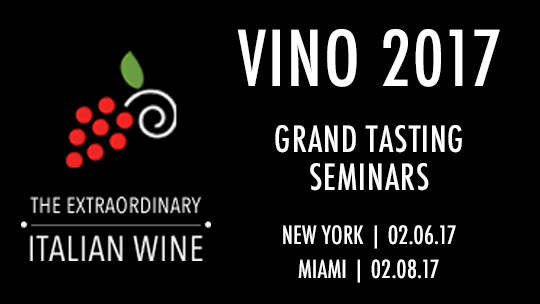
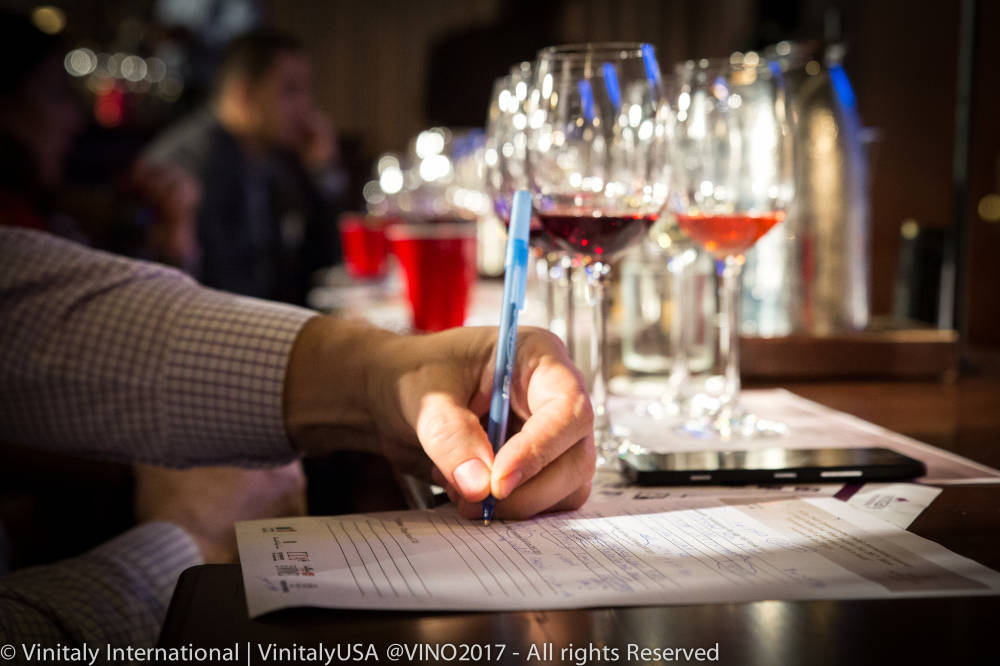

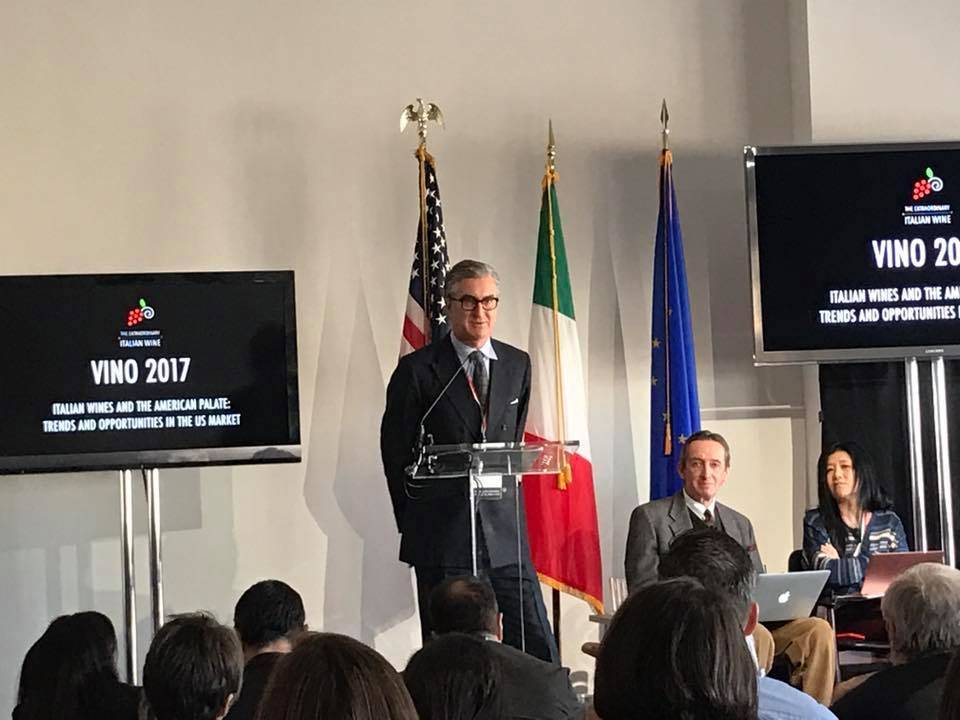

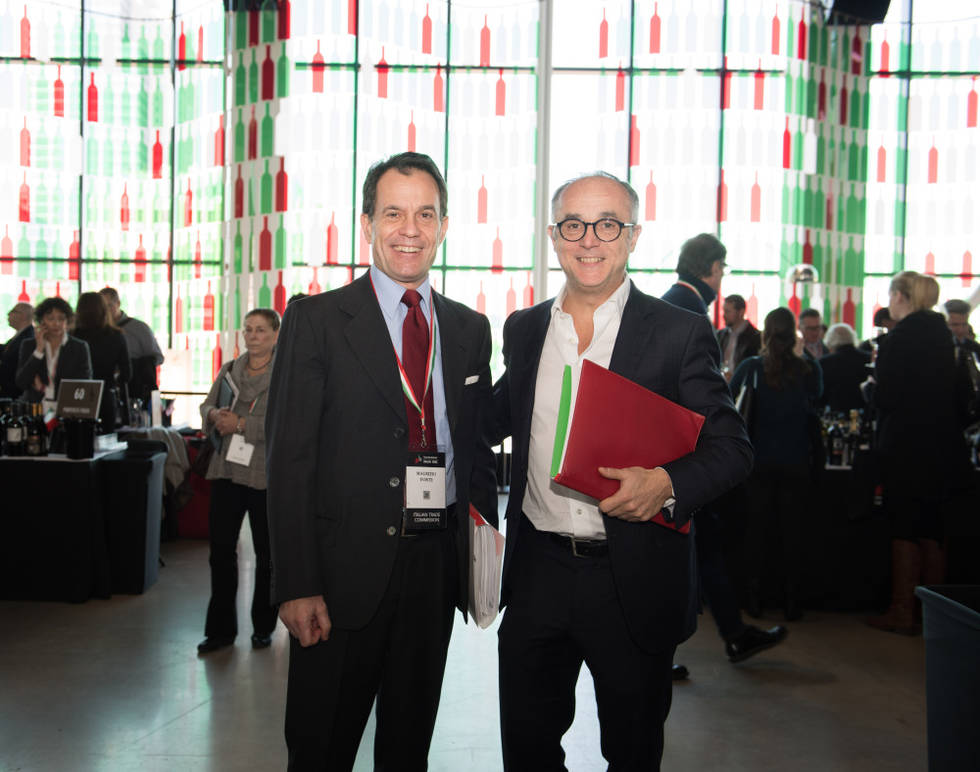
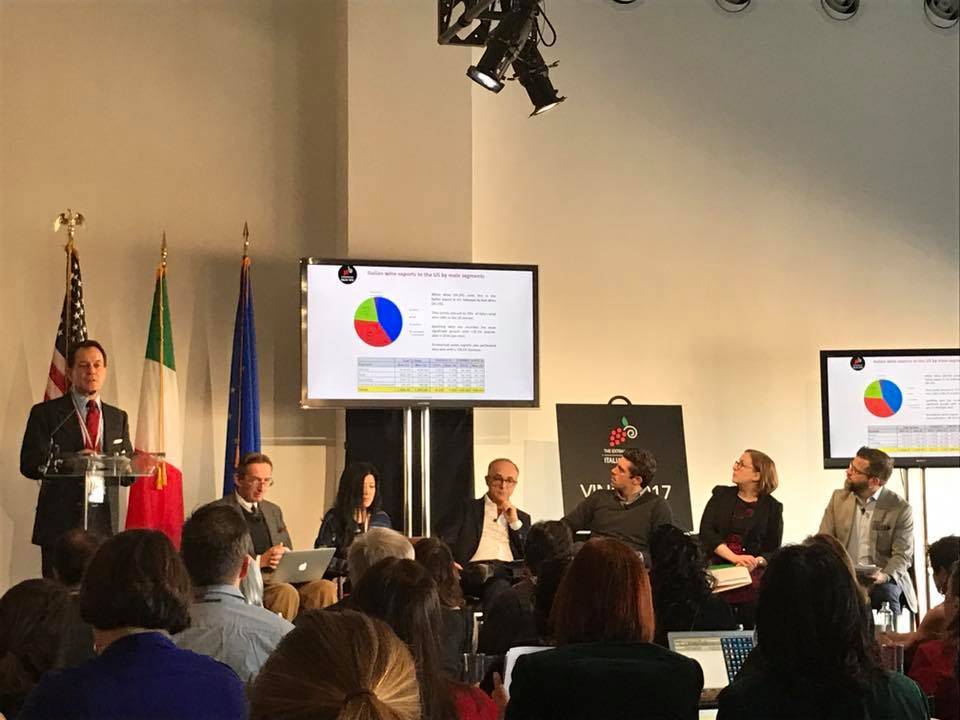

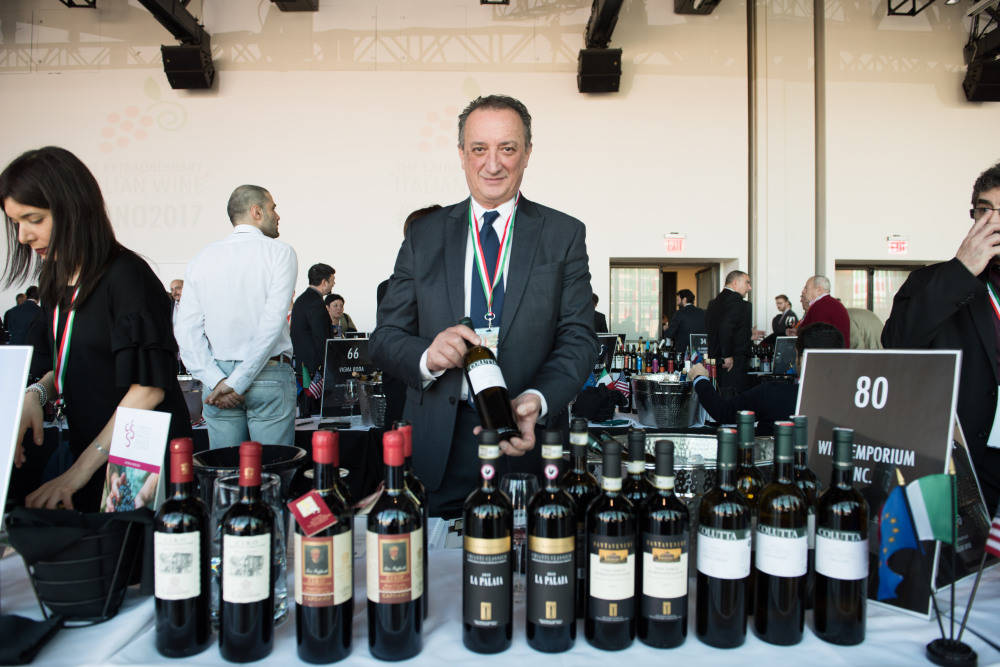







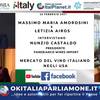
i-Italy
Facebook
Google+
This work may not be reproduced, in whole or in part, without prior written permission.
Questo lavoro non può essere riprodotto, in tutto o in parte, senza permesso scritto.